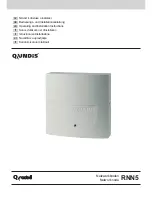
1-7
z
If the aggregation group you are creating already exists but contains no port, its type will change to
the type you set.
z
If the aggregation group you are creating already exists and contains ports, the possible type
changes may be: changing from dynamic or static to manual, and changing from dynamic to static;
and no other kinds of type change can occur.
z
When you change a dynamic/static group to a manual group, the system will automatically disable
LACP on the member ports. When you change a dynamic group to a static group, the system will
remain the member ports LACP-enabled.
3) When a manual or static aggregation group contains only one port, you cannot remove the port
unless you remove the whole aggregation group.
Configuring a Static LACP Aggregation Group
You can create a static LACP aggregation group, or remove an existing static LACP aggregation group
(after that, the system will re-aggregate the original member ports in the group to form one or multiple
dynamic aggregation groups.).
For a static aggregation group, a port can only be manually added/removed to/from the static
aggregation group.
When you add an LACP-enabled port to a manual aggregation group, the system will automatically
disable LACP on the port. Similarly, when you add an LACP-disabled port to a static aggregation group,
the system will automatically enable LACP on the port.
Table 1-2
Configure a static LACP aggregation group
Operation
Command
Remarks
Enter system view
system-view
—
Create a static aggregation group
link-aggregation group
agg-id
mode
static
Required
Enter Ethernet port view
interface interface-type interface-number
—
Add the port to the aggregation
group
port link-aggregation group agg-id
Required
For a static LACP aggregation group or a manual aggregation group, you are recommended not to
cross cables between the two devices at the two ends of the aggregation group. For example, suppose
port 1 of the local device is connected to port 2 of the peer device. To avoid cross-connecting cables, do
not connect port 2 of the local device to port 1 of the peer device. Otherwise, packets may be lost.
Summary of Contents for S3100 Series
Page 74: ...7 7 Sysname ip http acl 2030...
Page 270: ...1 51 Sysname GigabitEthernet1 0 1 port trunk permit vlan all...
Page 579: ...ii Configuration Example 2 4 QoS Profile Configuration Example 2 4...
Page 713: ...1 22 Total associations 1...
Page 823: ...1 16...
Page 1054: ...i Table of Contents Appendix A Acronyms A 1...
















































